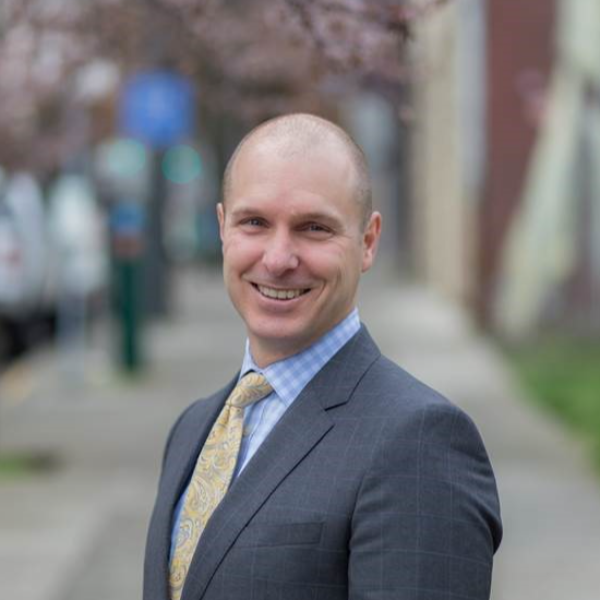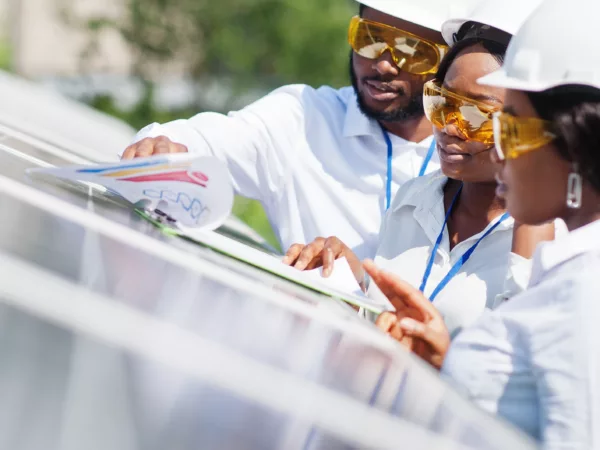Long-Term Solutions for Small Businesses. Here’s What PPP 3.0 Should Look Like
Apr 29, 2020 | Randell Leach, CEO

Originally published on Morning Consult
With so much at stake right now — whether measured in lives or livelihoods — we are glad Congress acted to replenish the Paycheck Protection Program (PPP) with $320 billion to help small businesses pay their employees during the COVID-19 crisis. But with the initial $349 billion in PPP funding drying up in less than two weeks, and some saying this new round could evaporate in as little as two days, we need to think about how to help small businesses recover over the long-term.
At Beneficial State Bank, we are eager to do our part to deliver desperately needed PPP loans to small businesses and, in the first round, were able to approve more than 300 applications worth nearly $100 million, allowing over 8,000 employees to be paid. Unfortunately, there are thousands of small business and nonprofit applications still in our queue representing tens of thousands of workers — and these people need more help. Just 1.6 million PPP loans were handed out in the first round, but there are 30 million small businesses in the country. Clearly, there is a yawning chasm of need and the hundreds of billions being shoveled in for a short-term fix will not fill it for long. Here are some longer-term measures we can take to help save jobs and the small business economy:
Plan for a longer time horizon with the comprehensive tools to recover.
Even after it’s deemed safe to socialize again, the impacts of this crisis will be enduring. With a government-enforced order to pause the economy, there needs to be a government-backed plan of support until it can be safely turned back on. And it won’t turn on with a flip of the switch; it will be disjointed as low-confidence consumers cautiously reclaim their lives with fewer resources than before, and the small business engine sputters to pull the enormous weight of a dislocated supply chain and economic disruption back onto the tracks.
Increase the size of any future small business loans.
The typical loan size is currently equivalent to 2.5 months of the applicant’s average payroll. Increasing the loan size to cover six to 12 months would allow businesses to address other pressing business-resumption needs such as restocking inventory, addressing supply chain disruptions and other mounting costs.
Be agnostic about capital.
It shouldn’t matter how the PPP loans are funded, but it does. If a bank uses the new Federal Reserve Paycheck Protection Program Lending facility, they get two benefits: funds to make the loans and regulatory capital relief. This means there is no liquidity or capital limit on a bank’s PPP funding. However, banks that don’t use the Fed loan facility to fund PPP loans have those liabilities counted against their capital ratios, which can limit how many PPP loans they can make. All PPP-related funding, be it deposits or loans, should get beneficial capital treatment so banks can make as many relief loans as possible to the small businesses that need it.
Expand the amount and period of loan forgiveness to sunset after social distancing orders have been lifted.
Right now, the forgivable amount is determined by how many employees are paid in the two months following funding; this means that businesses with employees who can’t or won’t return to work may not be eligible for full forgiveness. Right now businesses that have been approved for a PPP loan are forced to game the timing of taking down the loan to ensure it bridges them as far as they can to when they can actually resume business. A longer forgiveness period will accommodate potential extensions of the social emergency measures and give businesses an opportunity to realize the full forgiveness potential.
Extend the amortization timeline of the loans from two years to 10 or 15 years.
For any business whose loan is not fully forgiven during the pandemic period, the current two-year payback requirement may not be enough time to fully recover. Larger loans, coupled with a longer amortization, will help businesses get back on their feet and stay there without worrying about a new loan coming due in two years. It’s imperative we don’t knock down small business owners with a big loan payment before they are on solid footing.
Change the economics to fit the timeline and the need.
The current structure of the PPP is appropriate for short-term emergency relief and to “flatten the curve” of unemployment claims, but actually rebuilding the economy will require a sustained effort. We are in for the long haul and we must adapt to that. The current high-fee, low-interest-rate loan structure incentivized swift action to an immediate problem. A different tool is needed for a long-term fix, and Congress and Treasury can quickly add a variation of PPP to the toolkit. For banks to fund and carry a 10-15 year loan, the rates need to be higher than 1 percent (the original CARES Act legislation that created the PPP allowed for 4 percent). Matching a longer loan term with an appropriate interest rate will ensure banks have means to carry the loan and minimize the moral hazard of corporations exploiting the program to maximize borrowings for non-emergency purposes. The upfront fee paid to banks could be significantly reduced for larger loans, the total fees earned by banks could be capped and more incentives provided to support increased distribution of small-dollar loans that are essential for micro-enterprises. This combination would prevent banks and corporate stakeholders from unfairly profiteering from emergency relief and encourage more lending to the small businesses that need it.
It’s an extensive list, I know, but this is not the time for half-measures. It is time for our full arsenal. Together, we can get through this. We can rebuild, and we will recover.

Smarter Business Banking
Beneficial Banking™ supports local and regional businesses and organizations that serve our communities. Businesses like these are critical for building economic resilience and providing diverse employment opportunities.
Spotlight on Ethical Banking
We envision a more equitable economy and a banking industry that prioritizes a triple-bottom-line: people, planet, and prosperity for all.



